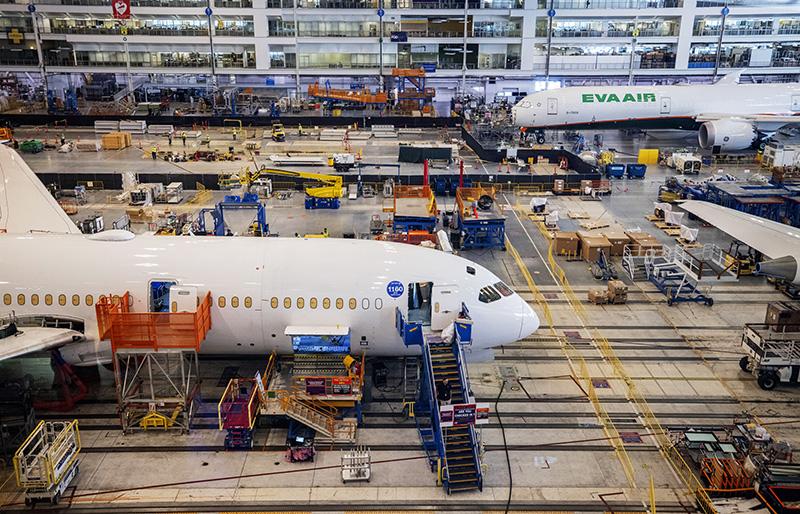Boeing Plans More Autonomy, Internal Parts Production On Next Airplane

Boeing 787 Line North Charleston, South Carolina
Boeing’s next new clean-sheet airplane will reflect the company’s pursuit of safety-enhancing automation and a re-evaluation of how much control it should have over its own design and supply chain, CEO Dave Calhoun said.
While declining to bite when asked when Boeing will launch a new airplane, Calhoun, in an interview with Aviation Week ahead of the Paris Air Show, shed more light on the company’s thinking behind its next design. Two big themes emerged: more autonomy and, likely, less reliance on suppliers.
Calhoun said Boeing’s goals do not include self-flying transport-category aircraft or removing any pilots from the flight deck. Such advances are “possible ... but that is not our motivation,” he said.
Rather, adding autonomous systems that complement common, existing functions such as autopilots will help commercial aviation reduce its already small fatal accident risk.
“It continues to get better,” Calhoun said of aviation’s safety record. “But you also know the hurdles. The biggest collection of hurdles ... to get to the end game, which is no accidents ever ... is human error. So, for me, autonomy is a safety argument.”
Work being done in Europe, including a European Union Aviation Safety Agency study, has prompted pilots’ unions to speak out against allowing fewer than two pilots in the flight deck, or designing any larger aircraft for single-pilot or autonomous operations.
Calhoun said the final verdict on reduced-crew operations will likely come down to regulators accepting it, not whether manufacturers can develop it.
“I think [technically] we’re going to get as close to [autonomous operations] as you could conceivably get and maybe actually reach it,” he said. “I view that as a regulatory decision. I think you’ll see a lot of applications someday. But in the meantime, our real objective has to be to continue on the safety improvement line that the industry has been on.”
Turning to producing the next new Boeing aircraft, Calhoun expects a different setup between the company and its suppliers compared to the 787, its last new clean-sheet design. Boeing leaned heavily on suppliers to both design and build 787 parts, gambling that the financially beneficial risk-sharing approach would not lead to bottlenecks. But a rash of supplier-related problems has plagued the program for years, prompting significant amounts of re-work, including a new issue uncovered in recent weeks, to ensure aircraft meet Boeing’s design and production specifications.
“If I look at the 787 and I think about the make/buy decisions and the time at which they were made, the industrial United States was focused on capital-light everything, and The Boeing Company was focused on capital-light,” Calhoun said. “I think we probably over-indexed. I want to over-index back the other way and control more of the vertical, and I want to control more of the [intellectual property]. How far we get down that spectrum, I don’t know, but it’s a very different objective than the team that started the 787.”
Boeing has taken steps towards more vertical integration and producing additional parts in-house, both to solve acute issues and re-balance how much it produces regularly, such as 737 MAX and 777-9 nacelle parts. The up-front supplier agreements inherent in any new airplane project open up more opportunity.
“We have a big [fabrication] operation that has actually bailed us out of many of these constraints,” Calhoun said. “The step-change on that subject occurs with the next airplane. That’s that moment in time when say, ‘Where did those bottlenecks come from? How did we build that supply chain on day one?’”







